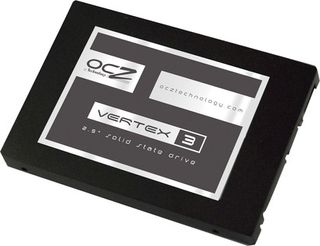Why you can trust TechRadar

The new SF-2000 controller has been designed to support NAND down to the 20nm level and is a slightly larger die at 14mm compared to the 13mm of the SF-1000 series.
As previously mentioned there are seven new controllers split into three categories; enterprise, industrial and client (desktop). The SF-2500 and SF-2600 parts are for the enterprise segment with Enterprise SATA and SAS interfaces, the sole SF-2300, the SF-2382, is aimed at industrial use.
The SF-2100 and SF-2200 controllers are the ones that concern us though; they're aimed at the desktop market.
The four controllers in this family are the SF-2141, SF-2181, SF-2281 and the SF-2282.
The SF-21xx parts differ from the other two as they only have a SATA 3Gbps interface while the SF-22xx parts use the faster SATA 6Gbps connector.
The offer main differences between the four are the number of flash channels and byte lanes they support; the SF-2141 has 4 flash channels and 4 byte lanes, the SF-2181 and SF-2281 have 8 flash and 8 byte lanes while the SF-2282 has the same number of flash channels but twice the amount of byte lanes at 16.
As each NAND device is 8 bytes wide it means that the SF-2282 can support two NAND devices per channel.
Whether the controller is 8 bytes or 16 bytes has no bearing on performance, it's all to do with how much capacity the drive can support.
All four desktop controller's use the same die; in fact all seven of the SF-2000 controllers do, with the differences being down to packaging, testing and, of course, firmware.
The SF-2000 still uses the DuraWrite technology of the previous generation, which combined with wear leveling and intelligent block management, extends the endurance of the drive. DuraWrite is a cache-less technology which means that drive manufacturers using the SF-2000 don't have to incur the extra cost of adding a third DRAM chip to use as cache.
SandForce has tweaked the power saving features of the controller as well, with built-in power/performance balancing that will help save battery life for notebook drive SSDs using the controller.
What's also been upgraded for the 2nd generation controller is the EEC engine which is now capable of correcting 55 bits per 512 byte sector, over twice what the engine in the previous generation SF-1200 series controller offered and currently the best in class EEC protection.
Also beefed up is the data encryption, SandForce has added an AES-256 engine to the existing AES-128 engine giving the SF-2000 double data encryption.
Current page: OCZ Vertex 3 240GB - Architecture
Prev Page OCZ Vertex 3 240GB - Overview Next Page OCZ Vertex 3 240GB - Benchmarks
How to watch Liège-Bastogne-Liège 2024: live stream men's cycling online from anywhere

A key Apple app is rumored to be getting a major upgrade in macOS 15

Intel's formidable 288 core CPU now has a proper family name — Granite Rapids and Sierra Forest are Xeon 6 processors but is it just becoming too confusing?